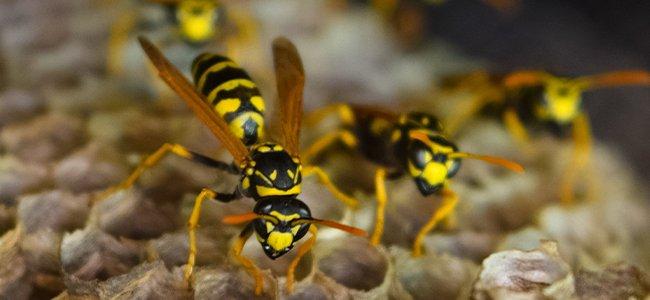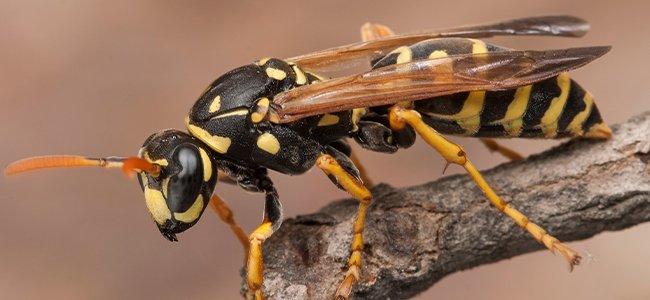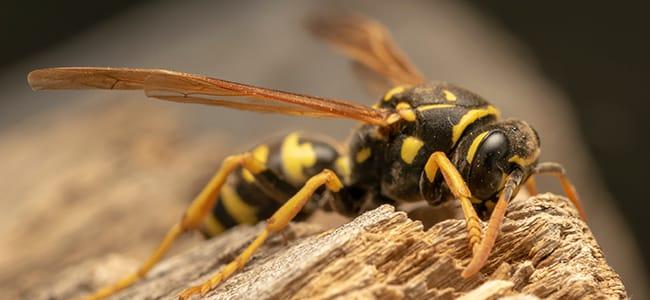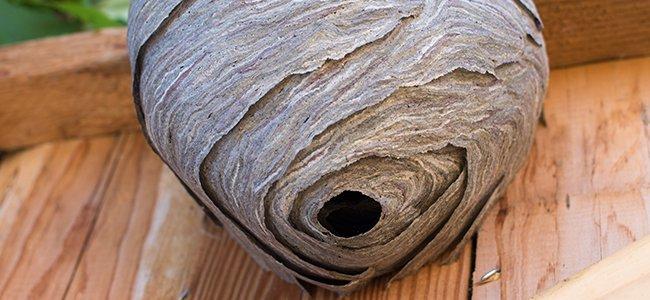
How To Keep Wasps Away From Your Washington D.C. Yard
08/23/2021
Stinging insects are extremely dangerous pests here in Washington D.C. For aggressive varieties such as wasps, home and business owners find themse...
READ MORE >
As we leave spring behind and feel the beginning of summer, there will be a construction boom that remains unaffected by the downturn of the housing market. Queen yellow jackets, hornets and wasps will begin the process of building this year’s nests.
Having spent the winter in a state of hibernation in places protected from winter’s cold such as an attic or a wall void, or perhaps hollow logs or stumps, these fertilized females will construct a small paper nest in which she will lay eggs and rear the first batch of workers. The nest is made of chewed wood fiber made into a paper-like pulp. With the emergence of the first of the new generation of workers, the colony rapidly expands.
Be on the lookout for these newly formed nests:
• Paper wasps will build on the underside of porches, decks and overhangs, soffits and the corners of windows.
• Depending on the species, yellow jackets will build either build an aerial nest in a tree or shrub or a nest in a void either in the ground or inside homes and other structures.
• Bald faced hornets (actually a species of yellow jacket) will build the classic upside-down pear shaped nest (looking a lot like gray, paper-mache) in trees and shrubs. When first noticed in the months of June and July, these may be baseball sized and contain less than 10 individuals.
As part of our IPM (integrated pest management) approach to service, which stresses the use of non-chemical control measures and results in a reduction of the overall use of pesticides, there are steps that a homeowner can take to reduce the numbers or pests or conditions that encourage pest development.
I have listed a few below for your reference:
• Keep your gutters clean - leaves from last fall and springs oak tree catkins (male flowers) can clog gutters and create moisture issues that are very conducive to insect development.
• Keep all trees and shrubs pruned away from the house – insects often use overgrown plants as ‘pest bridges’ to gain easy access to you home where they may seek food, shelter or moisture, or any combination of the three.
• Proper grading – make sure water drains away from the foundation. Walk around your house while it is raining to make sure that water is flowing into the gutters, down the spouts, and away from the foundation. The foundation of the house should be the first area to dry once the rain stops.

08/23/2021
Stinging insects are extremely dangerous pests here in Washington D.C. For aggressive varieties such as wasps, home and business owners find themse...
READ MORE >

06/27/2021
Some pests are so harmless that you almost feel bad for getting rid of them. Wasps, on the other hand, only cause relief when they’re gone. S...
READ MORE >

04/09/2021
Keeping your yard a safe and pleasant place to spend time, free of wasps and hornets, doesn’t just happen by itself. It takes thought and act...
READ MORE >

09/30/2020
Spending time in your Maryland yard is one of the best things about living here. Whether you’ve created a backyard oasis or enjoy rocking on ...
READ MORE >

Protect your home and family from nuisance and potentially damaging pests with a Preferred Care home pest control plan. Starting at $49/month

Don't let the bed bugs bite a second longer. Contact American Pest for the most comprehensive bed bug control in the industry. Learn More

Our certified rodent control pros will put an end to your frustration by getting rid of rats and mice inside your home. Learn More

Say goodbye to wood-destroying termites in your home when you contact American Pest for expert termite control. Learn More

Trust American Pest to deliver professional backyard tick control services that are guaranteed to get results. Learn More

Don't spend the warm-weather season indoors, find out how American Pest's professional treatments get rid of mosquitoes. Learn More
Fill out the form and recieve feedback in less than 5 minutes. For immediate service please call.